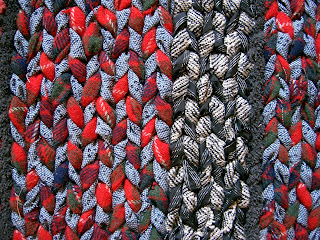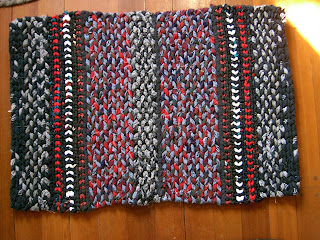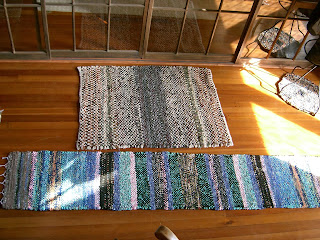These 30 cm seat pads are made mostly from recycled fleece from old blankets and scarfs.
 |
Recycled fleece hooked seat pad
Above, the fleece had big polka dots that created a spotted pattern when the narrow strips were hooked.
|
Below the background is made with a red plaid fleece, creating a mottled design.
 |
| Recycled fleece hooked seat pad |
The edges are whip stitched with yarn. I ran a length of cotton cord around the edge, turned the monk's cloth edge over the cord and whip-stitched it into place, leaving a nice border.
This hooked sampler was made using random wool strips left over from other projects. To use it as a small mat, I machine stitched the edges of the backing cloth and frayed the remainder to make a fringe.


















































